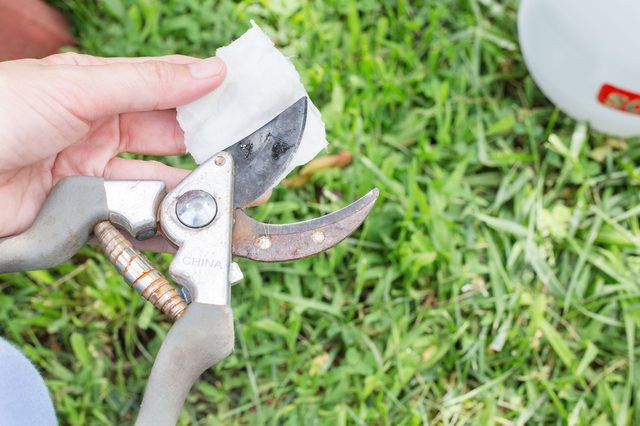Bulbs
Flower Basics
Flower Beds & Specialty Gardens
Flower Garden
Garden Furniture
Garden Gnomes
Garden Seeds
Garden Sheds
Garden Statues
Garden Tools & Supplies
Gardening Basics
Green & Organic
Groundcovers & Vines
Growing Annuals
Growing Basil
Growing Beans
Growing Berries
Growing Blueberries
Growing Cactus
Growing Corn
Growing Cotton
Growing Edibles
Growing Flowers
Growing Garlic
Growing Grapes
Growing Grass
Growing Herbs
Growing Jasmine
Growing Mint
Growing Mushrooms
Orchids
Growing Peanuts
Growing Perennials
Growing Plants
Growing Rosemary
Growing Roses
Growing Strawberries
Growing Sunflowers
Growing Thyme
Growing Tomatoes
Growing Tulips
Growing Vegetables
Herb Basics
Herb Garden
Indoor Growing
Landscaping Basics
Landscaping Patios
Landscaping Plants
Landscaping Shrubs
Landscaping Trees
Landscaping Walks & Pathways
Lawn Basics
Lawn Maintenance
Lawn Mowers
Lawn Ornaments
Lawn Planting
Lawn Tools
Outdoor Growing
Overall Landscape Planning
Pests, Weeds & Problems
Plant Basics
Rock Garden
Rose Garden
Shrubs
Soil
Specialty Gardens
Trees
Vegetable Garden
Yard Maintenance
How to Treat Plants With Black Sooty Mold
How to Treat Plants With Black Sooty Mold. Sooty mold forms a gray or black coating on leaves, tender stems or flowers. The mold may cover an entire leaf surface or appear in spots, depending on the severity of the problem. Although sooty mold doesn't penetrate the plant tissues, it can weaken it by blocking sunlight. A severe enough sooty mold...
Sooty mold forms a gray or black coating on leaves, tender stems or flowers. The mold may cover an entire leaf surface or appear in spots, depending on the severity of the problem. Although sooty mold doesn't penetrate the plant tissues, it can weaken it by blocking sunlight. A severe enough sooty mold problem can cause general plant decline but rarely kills the plant. The mold grows on the sticky honeydew secreted by sap-sucking pests, such as aphids and mealybugs, so you must both eliminate the pests while treating the mold.
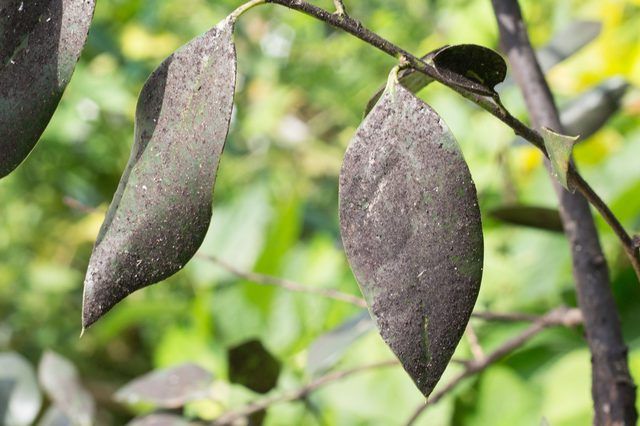
Things You'll Need
Horticultural oil
Pump sprayer
Hose sprayer attachment
Mild soap or detergent
Pruning shears
Cloth
Alcohol
Step 1
Mix 4 tablespoons of horticultural oil with 1 gallon of water in a pump sprayer. Use a neem- or paraffin-based horticultural oil to combat aphids or whiteflies, or a fish-based or standard horticultural oil for scales and mealybugs. Shake the mixture vigorously so the oil and water are mixed together.
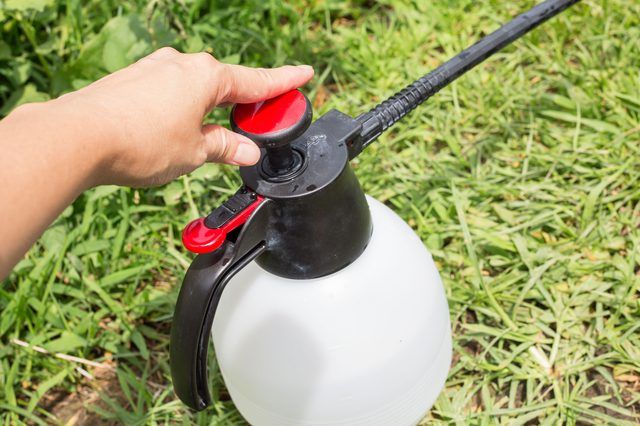
Step 2
Spray the oil mixture on the affected leaf surfaces until they are drenched. Apply oil to dry plants when temperatures are below 100 degrees Fahrenheit and above freezing.
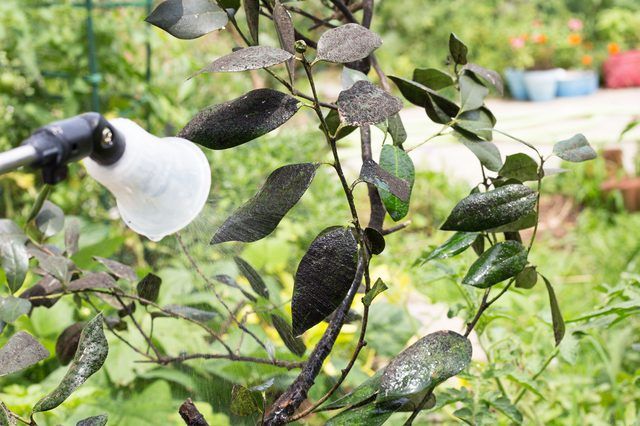
Step 3
Reapply the oil a second time five to seven days later if any pests remain on the plant and if the plant isn't suffering from any damage or stress from the first application. Light insect and sooty mold infections typically only require one application, while more severe infections may require two applications.

Step 1
Spray the plant with a forceful jet of water from a garden hose one or two days after the final oil treatment to remove as much sooty mold from the leaf surfaces as possible. Spray the plants early in the day so the water dries in the morning and afternoon sun.

Step 2
Mix 1 teaspoon of mild liquid soap or detergent with 1 gallon of water in a clean pump sprayer if some mold remains on the plant after the plain water spray. Stir the solution to combine the soap and water.
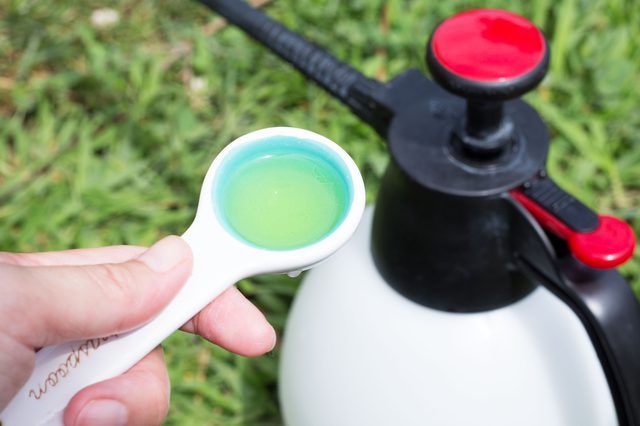
Step 3
Coat the affected leaves with the soap and water spray, drenching them until the excess spray drips off the leaves. The soap helps break down and remove any remaining sooty mold residue.
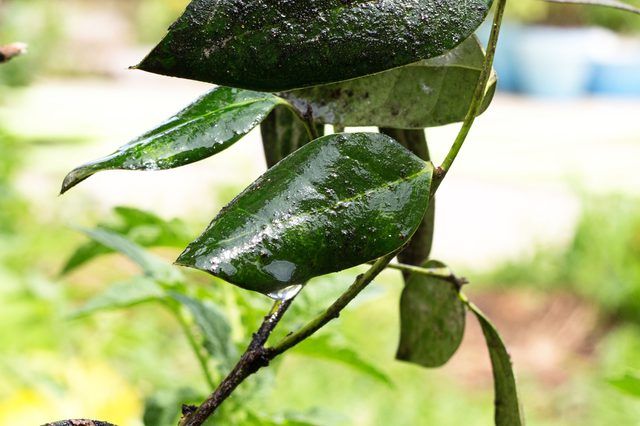
Step 4
Rinse the leaves with a sharp spray of fresh water the following day to remove any soap residue and remaining sooty mold. Trim off any dead or badly mold damaged leaves that remain, wiping the shears with an alcohol-soaked rag between cuts to kill any remaining mold spores.
